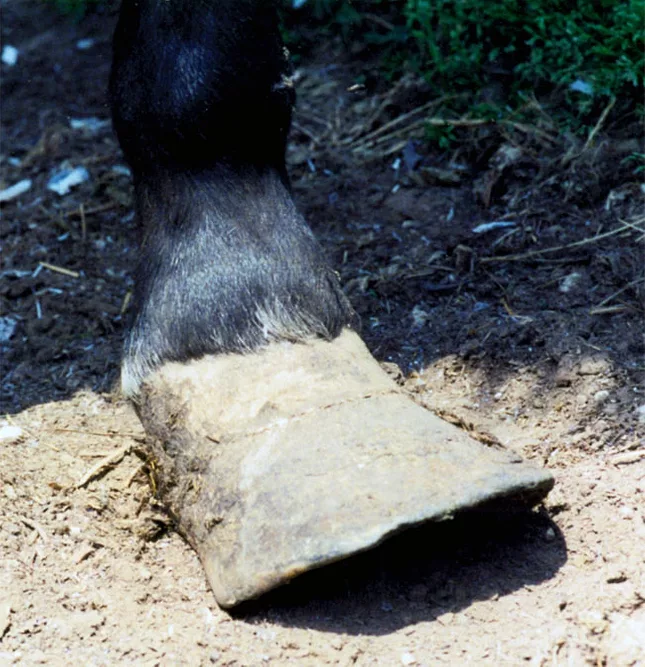American Farriers Journal
American Farriers Journal is the “hands-on” magazine for professional farriers, equine veterinarians and horse care product and service buyers.

DUCK BILL OR HOOF? Dealing with hoof distortion is a part of daily life for farriers. Careful trimming based on anatomical principles is the key in dealing with many distortions.
Not all hooves are created equal. If they were, shoeing would be an easy skill to master, everyone would do it and it would not pay nearly what it does. Luckily, every hoof has a story to tell and — as farriers — we need to learn how to read that story and write a happy ending to it.
This article will focus on a variety of unusual hooves that I have encountered over the years, as well as how I dealt with them. It is my hope that something in this article can help you deal with a badly misshapen hoof the next time you run into one.
Hoof distortion happens for a variety of reasons. Neglect, conformation and injury are perhaps the most common elements that will lead to a problem hoof. A good farrier will learn how to erase years of neglect in a short period of time by trimming a foot to some basic principles based on hoof anatomy. I strive to achieve symmetry in horses’ feet because I believe a symmetrical hoof will bear weight more evenly over the entire foot.
I have worked with some very respected farriers who believe an asymmetrical hoof should be left asymmetrical. Sometimes, the shape of the shoes that are applied encourages this lack of symmetry. This approach leads to more distortion over time, which I feel is not in the best interest of the horse. When I tried this method, I was dissatisfied with how…